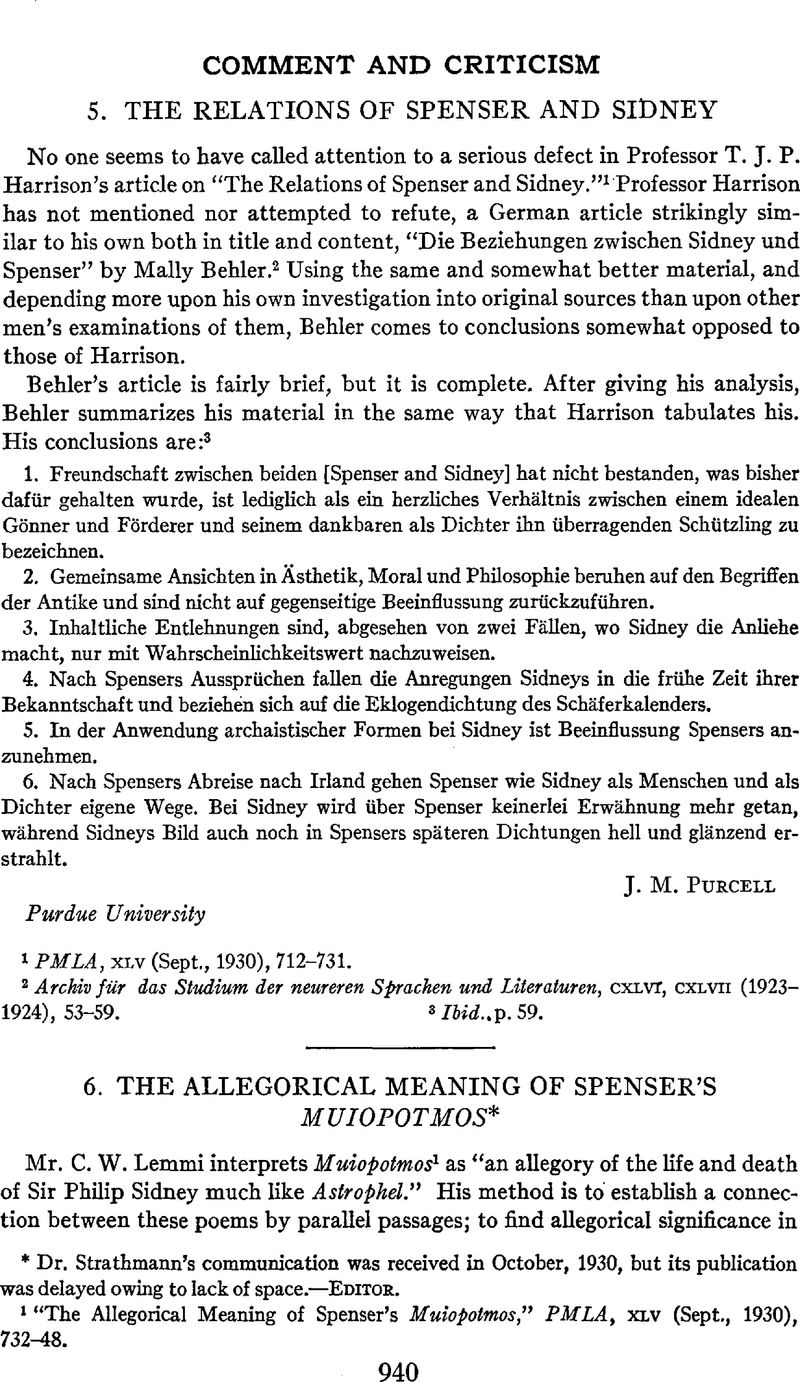No CrossRef data available.
Article contents
6. The Allegorical Meaning of Spenser's Muiopotmos
Published online by Cambridge University Press: 02 December 2020
Abstract

- Type
- Comment and Criticism
- Information
- Copyright
- Copyright © Modern Language Association of America, 1931
References
∗ Dr. Strathmann's communication was received in October, 1930, but its publication was delayed owing to lack of space.—Editor.
1 “The Allegorical Meaning of Spenser's Muiopotmos,” PMLA, xlv (Sept., 1930), 732–48.
2 Mr. Lemmi remarks in passing (p. 737) that the Epitaph is still included in the Spenser canon. More accurately, it is printed with Spenser's poems: De Selincourt assigns only Astrophel certainly, and the Lay of Clorinda probably, to Spenser. (Oxford Spenser, p. xxxv; cf. also Spenser's Minor Poems, ed. De Selincourt, p. xxiii.)
3 FQ iii, ii, 14; iv, ii, 46; iii, iv, 24.
4 Basing his opinion on a highly etherealized description of Sidney (p. 735), Mr. Lemmi finds the butterfly, the symbol of the soul, peculiarly appropriate to the knight. His description might fit the popular conception of Shelley; it is not even half the story in Sidney's case, as the reader may see from Philip's letter to Molyneux (M. W. Wallace, The Life of Philip Sidney, p. 201). More particularly, the awkwardness of the identification becomes apparent when we contrast the death of the unsuspecting Clarion, killed from ambush while on a pleasant holiday, with the gallant death of Sidney.
5 Second Idyl, 115–24. Translation by J. M. Edwards, The Greek Bucolic Poets, “Loeb Classical Library.”
6 Spensers Belesenheit, p. 103.
7 Spenser refers to Cupid's “brothers” in Epithalamion, 357, 364; alludes to them figuratively in Amoretti, xvi, and in An Hymne of Beautie, 240; and describes them in FQ iv, x, 42.
8 The Library, iii, i, 2.
9 “The Metamorphoses in Muiopotmos,” MLN, xxviii (1913), 82–85.
10 Emma Marshall Denkinger, “Spenser's Muiopotmos Again,” PMLA, xlvi (March. 1931), 272–76.
11 Cf. Edwin Greenlaw, “Spenser and British Imperialism,” Modern Philology, ix (1911–12), 347–70.
12 The words are not in the poem; the only possible justification for their use is found in lines 169–180, which tell of the envy of Mars and describe figuratively the making and firing of a musket. The two stanzas tell us, in typically Elizabethan fashion, that Sidney was fatally wounded by a musket-ball.
13 Edition of 1592; quotations, A3v. The first edition listed in the Short-Title Catalogue is dated 1587.
1 PMLA, xlvi, 216.
2 This record is a letter by D. Tyndale dated Feb. 18, 1686/7, in Aubrey's Brief Lives, ii, 251.
3 PMLA, xlvi, 273, note 17.
4 MLN, May, 1930, p. 310.
5 PMLA, xlv, 744.




